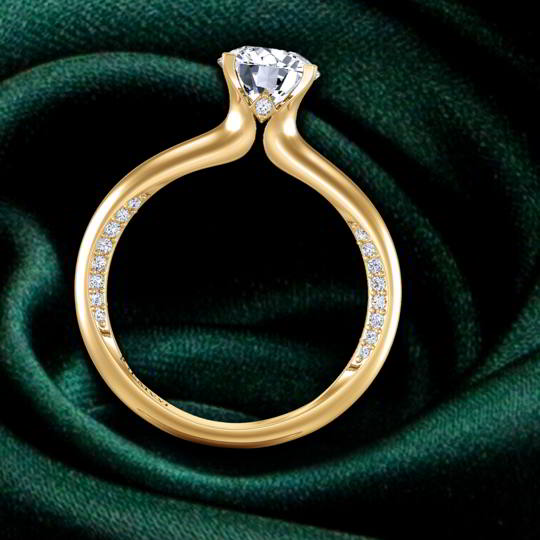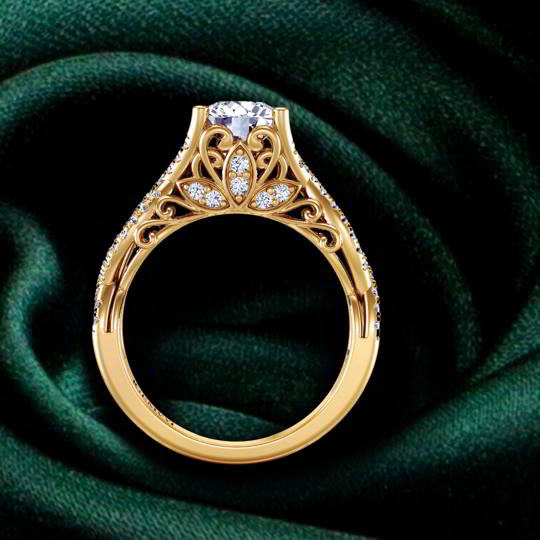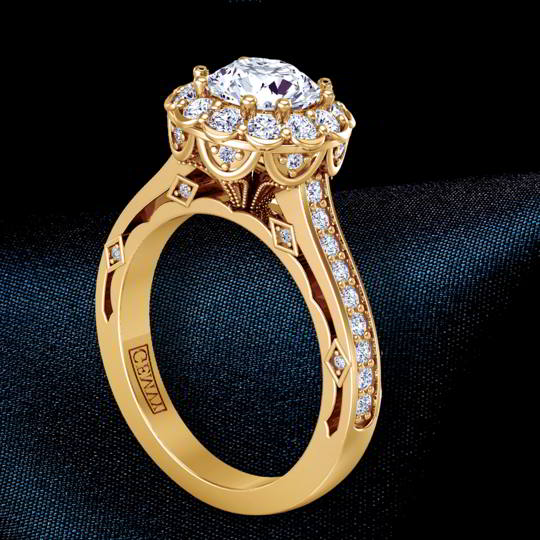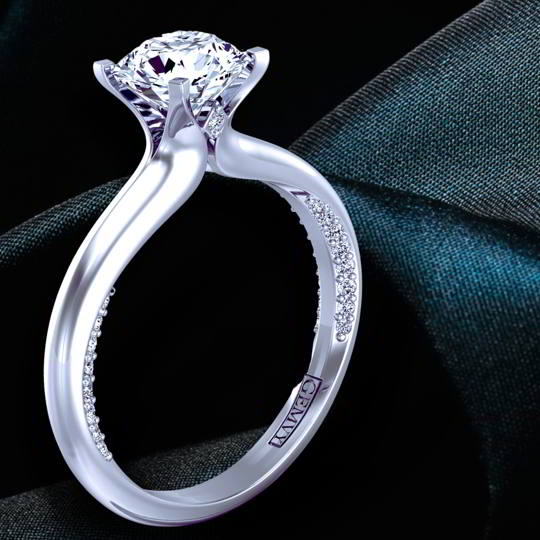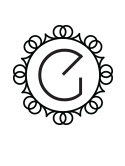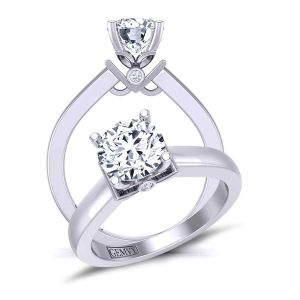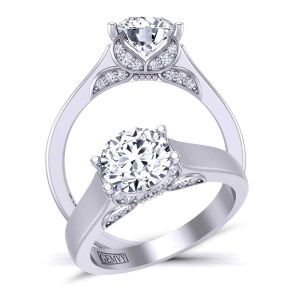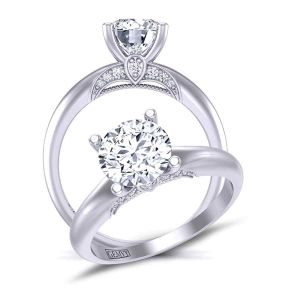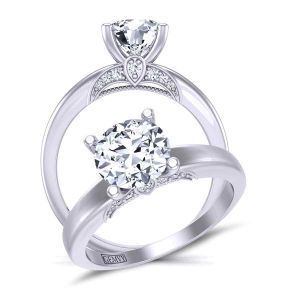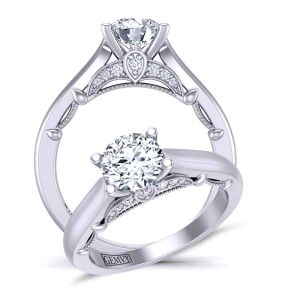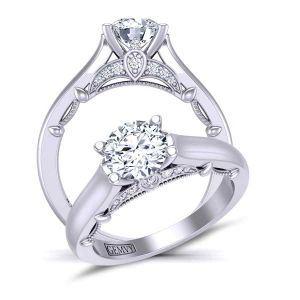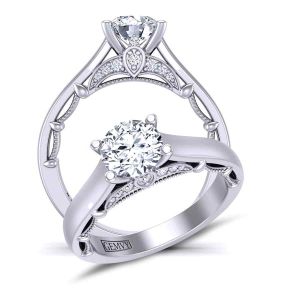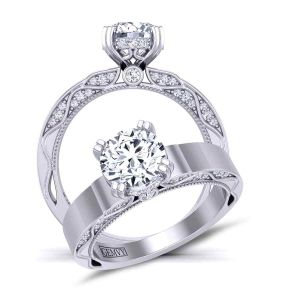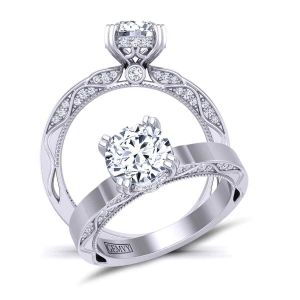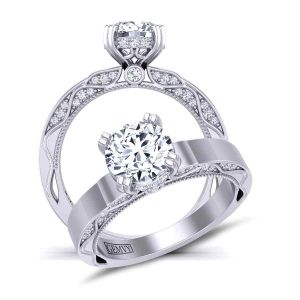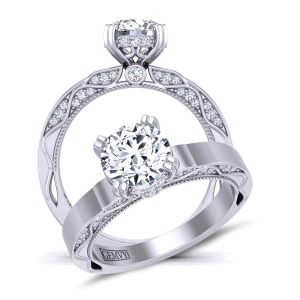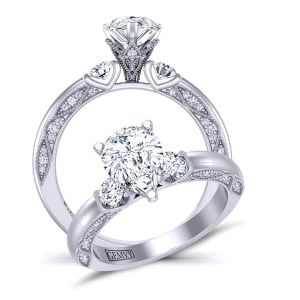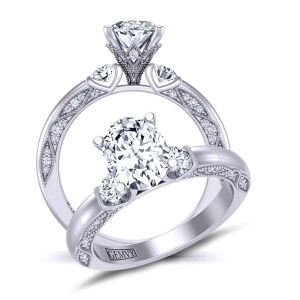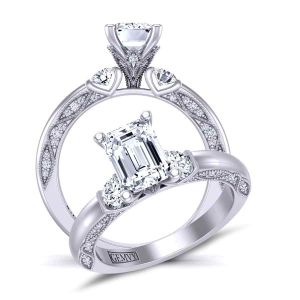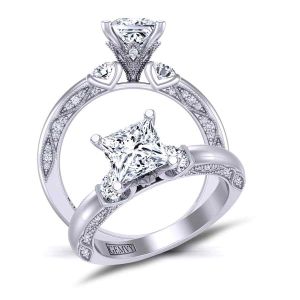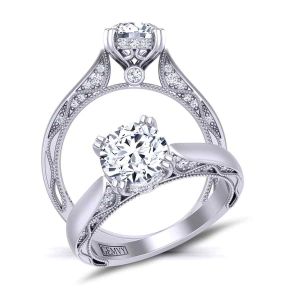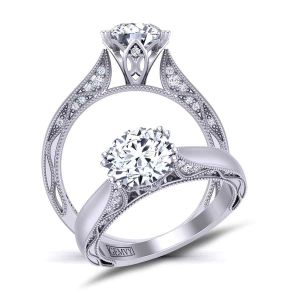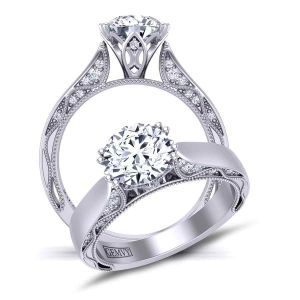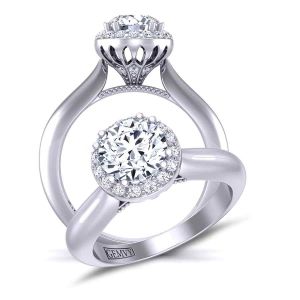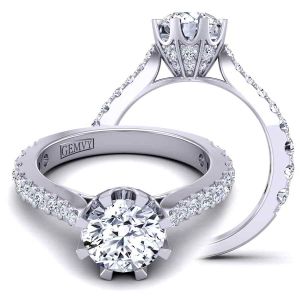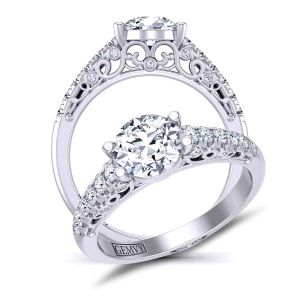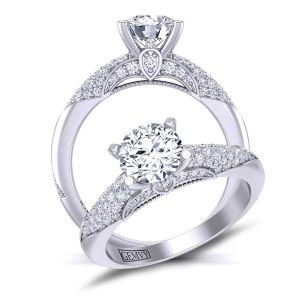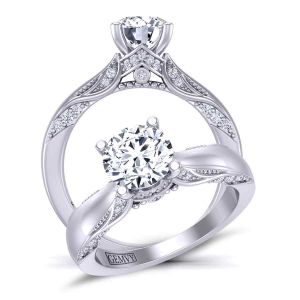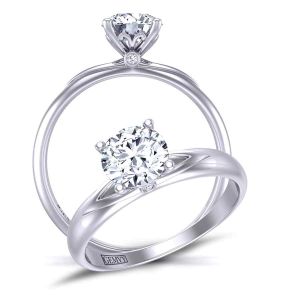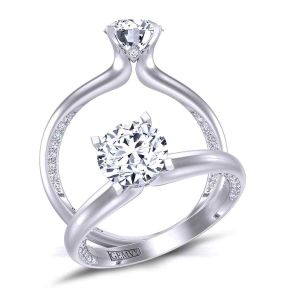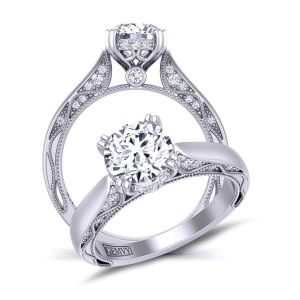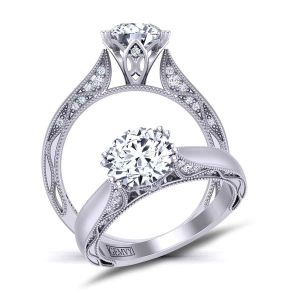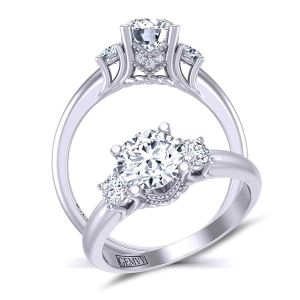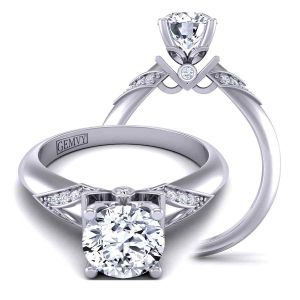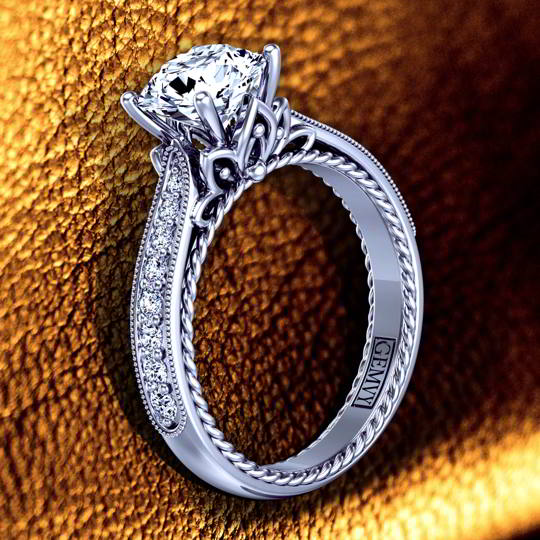
HOW MUCH DOES AN ENGAGEMENT RING COST? AN IN-DEPTH OVERVIEW
Introduction
The engagement ring, a symbol of love and commitment, is one of the most cherished and meaningful pieces of jewelry a person will ever own. When embarking on the journey to select the perfect engagement ring, you're not only choosing a beautiful adornment, but you're also making a significant financial decision. The cost of an engagement ring can vary greatly, influenced by a multitude of factors, each playing a role in determining the final price tag.
In this comprehensive guide, we'll delve into the intricate world of engagement ring costs and the factors that influence them. While there's no one-size-fits-all answer to the question of how much an engagement ring should cost, we'll explore the key determinants that affect the price range.
Factors that influence an Engagement Ring’s Cost
I. Purchase Platform and Shopping Method: The Engagement Ring Quest
In the quest for the perfect engagement ring, the choice of where and how you purchase it plays a pivotal role in shaping both your experience and the cost. Let's dive into the two primary avenues – online and in-store buying, along with the nuances of each.
A. Online vs. In-Store Buying
The decision between online and in-store engagement ring shopping is not merely a matter of convenience; it's a choice with tangible financial consequences.
Online Purchases:
- Cost-Efficiency: Online retailers often offer engagement rings at a more budget-friendly price point. On average, rings available online can be 20% to 40% less expensive compared to in-store options.
- Lower Overheads: Online jewelers have fewer operational costs, translating into cost savings for customers. Expenses like rent, utilities, and in-store staff are significantly reduced in the online space.
- Diverse Selection: The vast online marketplace provides a diverse range of options to cater to different budgets and preferences. This variety allows you to easily compare prices, styles, and quality.
In-Store Purchases:
- Tangible Experience: In-store shopping offers a tactile experience, allowing you to examine and feel the ring before making a decision. This hands-on interaction is invaluable when assessing quality and craftsmanship.
- Expert Guidance: Physical retailers provide expert advice and personalized consultations, which can be essential for making such an important purchase.
Ultimately, the choice between online and in-store shopping will depend on your comfort level, the importance of physically inspecting the ring, and the price range you are targeting.
B. Custom vs. Mass-Produced Rings
Another major factor influencing the cost of your engagement ring is whether you opt for a custom design or a mass-produced ring.
Custom Engagement Rings:
- Price Range: Custom engagement rings exhibit a wide price range, with an average cost spanning from $3,000 to $10,000. For intricate, high-end designs, the cost can surpass this range.
- Unique Designs: Customization offers the opportunity to create a one-of-a-kind ring that aligns perfectly with your style and preferences. The cost depends on factors such as design complexity, material choices, and craftsmanship.
- Craftsmanship: Custom rings often boast intricate craftsmanship, with meticulous attention to detail and personalized elements, contributing to higher costs.
Mass-Produced Engagement Rings:
- Price Range: Mass-produced engagement rings are generally more budget-friendly, with prices typically falling between $1,000 and $5,000. However, exceptions exist, particularly for high-end designer brands that can be considerably more expensive.
- Standardized Designs: Mass-produced rings are available in a broad spectrum of styles and sizes, featuring standardized designs produced in large quantities. Mass production leads to cost savings.
- Economies of Scale: Large jewelry retailers leverage economies of scale, enabling them to reduce production costs and potentially pass these savings on to customers.
Selecting between custom and mass-produced engagement rings is a decision that should align with your personal style, budget, and the emotional significance you attach to the ring. Your choice here sets the stage for the next steps in your engagement ring journey. In the subsequent section, we'll explore the crucial factor of selecting the center stone for your ring and how it can significantly affect the price.
II. Gemstone and Diamond Considerations
A. Center Stone Selection
Your choice of center stone plays a pivotal role in determining the cost of your engagement ring. Here's a detailed look at the options and how they influence the overall price:
1. Diamonds: Natural diamonds are renowned for their beauty and rarity, making them a premium choice. Their cost is primarily influenced by the famous 4Cs (Cut, Carat, Color, Clarity):
- Cut: The quality of a diamond's cut significantly affects its price. Diamonds with an excellent cut grade are often priced higher than those with a good cut.
- Carat Weight: Diamonds are priced per carat, so a larger carat weight means a significantly higher cost. For example, a one-carat diamond is disproportionately more expensive than a half-carat diamond.
- Color: Colorless diamonds (D-F) are considered high-quality and can cost 20-40% more than near colorless diamonds (G-H).
- Clarity: Diamonds with flawless or internally flawless grades are more expensive than slightly included diamonds.
2. Colored Gemstones: Opting for colored gemstones like sapphires, emeralds, or rubies can provide an elegant and budget-friendly alternative to diamonds. Prices vary significantly depending on the gemstone type, but on average, a one-carat sapphire can be 50-70% less expensive than a one-carat diamond.
3. Lab-Created Diamonds: Lab-created diamonds are prized for their eco-friendliness and affordability. Their cost is influenced by the same 4Cs as natural diamonds, but they are generally much less expensive for the same carat weight and quality.
4. Carat Weight: The size of your chosen center stone significantly influences cost. Larger carat weights result in proportionally higher prices. For instance, a two-carat diamond can be disproportionately more expensive than a half-carat diamond (all other factor remaining the same), regardless of whether it's natural or lab-created.
III. Source of Purchase
Where you choose to purchase your engagement ring can significantly impact its cost. Here's an exploration of different players in the market and how they influence the overall price:
A. Middlemen Selling Designer Products
- Middlemen in the industry often act as intermediaries between designers and consumers. They play a role in making designer products accessible but may add markups to the final price. This can lead to engagement rings being priced at a premium due to the involvement of these intermediaries.
B. Pawn Shops
- Pawn shops offer a unique alternative, allowing you to find pre-owned engagement rings at potentially lower prices. The cost can vary widely based on the quality and condition of the ring.
C. Designer Brands like Tiffany & Co.
- High-end designer brands like Tiffany & Co. are renowned for their craftsmanship and prestige. However, the allure of the brand name often comes with a premium price. Engagement rings from such brands can be significantly more expensive compared to other options.
D. Gemvy as a Designer Brand Selling Direct
- Gemvy is a unique player in the market, offering designer engagement rings directly to consumers. This direct-to-consumer model eliminates middlemen, resulting in competitive pricing. Gemvy's commitment to quality and customization allows you to find exceptional value without the markups associated with traditional retailers.
Understanding the different players and their roles in the market empowers you to make an informed decision that aligns with your preferences and budget for your ideal engagement ring. Gemvy, in particular, stands out as a designer brand that provides quality, affordability, and direct access to beautifully crafted engagement rings.
IV. Metal Types and Their Impact
The choice of metal for your engagement ring has a substantial influence on its cost. Let's explore how different metal types can affect the overall price:
Traditional Metals
- Gold: Gold is a classic choice for engagement rings and comes in various shades like yellow, white, and rose gold. The cost varies with the purity of the gold, with 18k gold being more expensive than 14k gold due to the higher gold content.
- Platinum: Platinum is a premium metal known for its durability and rarity. It's usually the most expensive metal option, with prices significantly higher than gold.
Alternative Metals
- Palladium: Palladium is a lightweight and less expensive alternative to platinum, offering similar characteristics at a more affordable price point.
- Titanium: Titanium is incredibly durable and budget-friendly. It's an excellent choice for those seeking a unique, contemporary look without the high cost.
Custom Options
- Mixed Metals: Combining different metals can add a unique touch to your ring design. However, the cost depends on the specific metals chosen and the intricacy of the design.
- Alternative Materials: Some couples opt for alternative materials like tungsten or cobalt for a distinctive and cost-effective option.
Recycled and Sustainable Metals
- Eco-Friendly Choices: Recycled metals and those from sustainable sources are environmentally responsible options. While the prices are often on par with traditional metals, the ethical considerations may be priceless to some buyers.
Your choice of metal not only impacts the appearance and style of your engagement ring but also plays a vital role in determining its cost. Consider your budget and preferences to find the perfect metal that aligns with your needs.
V. Setting Type and Design
The setting type and design of your engagement ring significantly contribute to its cost. Here, we explore the various options and how they can influence the overall price:
Setting Types
- Prong Setting: A prong setting requires more metal and labor, making it a costlier choice. However, it allows more light to pass through the diamond, enhancing its brilliance.
- Halo Setting: Halo settings add smaller diamonds around the center stone, which can increase the overall carat weight. This adds to the cost, but it also enhances the ring's sparkle.
- Bezel Setting: Bezel settings use less metal, which can reduce the cost. They offer a sleek and modern look while providing excellent security for the diamond.
Design Considerations
- Complexity of Design: Elaborate and intricate designs often come at a premium due to the added labor and craftsmanship required.
- Personalization: Customizing your engagement ring can add to the cost, particularly if it involves unique and detailed design elements.
- Designer Brands: Engagement rings from renowned designer brands may come with a higher price tag, reflecting the brand's reputation and craftsmanship.
- Vintage or Antique Styles: Rings with vintage or antique designs may be more expensive due to their unique and timeless appeal.
- Additional Elements: Adding features like filigree, milgrain, or engraving can increase the cost of the ring.
By carefully considering the setting type and design, you can select an engagement ring that aligns with your style, preferences, and budget.
Real-Life Examples
To provide a more comprehensive understanding of how various factors impact the cost of an engagement ring, let's delve into real-life examples. In each case, we'll consider the setting, its metal, style, and the inclusion of a 1.30-carat lab diamond (VS, G color, Excellent cut) that costs $1,200. Here are the breakdowns of the total costs:
1. Cathedral Floral Pave Twist Setting
- Metal: 14k White Gold
- Setting Style: Cathedral Floral Pave Twist
- Total Cost: $2,450 (Setting) + $1,200 (Lab Diamond) = $3,650
The combination of the intricately designed Cathedral Floral Pave Twist setting in 14k white gold with the inclusion of a 1.30-carat lab diamond leads to a total cost of $3,650.
2. Contemporary Elegant Solitaire Setting
- Metal: 14k Yellow Gold
- Setting Style: Contemporary Elegant Solitaire
- Total Cost: $2,200 (Setting) + $1,200 (Lab Diamond) = $3,400
Opting for the timeless 14k yellow gold Contemporary Elegant Solitaire setting alongside a 1.30-carat lab diamond results in a total cost of $3,400.
3. Art Deco Floral Halo Setting
- Metal: 14k Rose Gold
- Setting Style: Art Deco Floral Halo
- Total Cost: $2,600 (Setting) + $1,200 (Lab Diamond) = $3,800
The romantic 14k rose gold Art Deco Floral Halo setting, combined with a 1.30-carat lab diamond, leads to a total cost of $3,800.
These real-life examples highlight the significant influence of factors such as the choice of metal, setting style, and the inclusion of a lab diamond when determining the overall cost of an engagement ring. It's a testament to the variety and flexibility available when selecting the perfect ring within your budget.
Conclusion
Ultimately, the ideal engagement ring is a unique expression of your love story, and it doesn't have to break the bank. By understanding the different factors at play and making informed decisions, you can find a ring that symbolizes your commitment while remaining within your budget.


